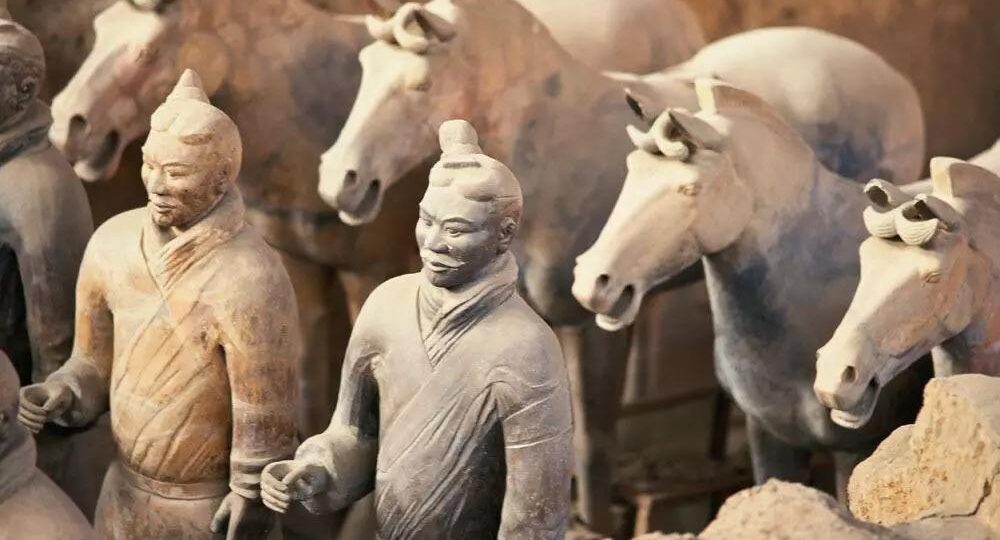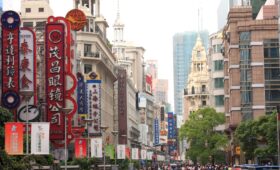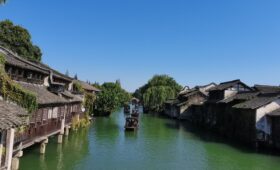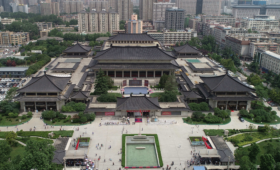Terracotta warriors from the mausoleum of the first Qin emperor of China Qin Shihuang,B.C 221-206 Qin Dynasty,
painted terracotta, Terracotta Warriors and Horses Museum, Shaanxi, China
The First Emperor Qin Shihuang conquered much in this life,but his driving purpose was even greater.
He sought to conquer death.
In order to achieve immortality,he built himself a tomb—a vast underground city guarded
by a life-size terracotta army including warriors, infantrymen, horses, chariots and all their attendant armor and weaponry.
Innovation
The First Emperor is known for stunning innovations that consolidated his rule through modernization.
During his reign, he introduced the standardization of currency writing,measurements and more.
He connected cities and states with advanced systems of roads and canals.
He is also credited with continuing the construction of the Great Wall,
which is perhaps the most widely-known symbol still associated with China to this day.
He is regarded as a military genius,and while his methods included massacre and destruction,
some claim that his ultimate success at bringing the states together justifies the violence, a necessary cost of nation-building.
We also see the first assembly-line style production in the creation of his terracotta warriors, horses and chariots.
Immortality
Perhaps the most fascinating aspect of the burial complex is what it suggests about the young Emperor’s obsession with immortality.
Driven to conquer death itself,the eventual First Emperor ascended to the throne of the Qin state at age of 13
and immediately began to plan his burial,and more importantly,his underground palace,
a mausoleum attended by an army including over 7,000 terracotta warriors horses,
chariots and weaponry intended to protect him in the afterlife.
The Emperor envisioned a subterranean domain that would parallel his worldly existence after corporal death.
According to Han-dynasty historian Sima Qian,
Qin Shuhuag lined his burial complex with a treasury of riches and piles of precious gemstones said to represent the stars, sun and moon.
He was deeply concerned with the universe and looked to the cosmos as a guide for crossing over to an immortal existence.
Excavation also revealed other mysterious findings,like strangely high levels of mercury
and evidence that the poisonous substance coursed through an intricate system of underground troughs,
replicating the topography of the actual rivers and seas carving the surrounding landscape.
Some suggest that the emperor believed mercury had life-giving power and so surrounded himself with the toxic element,
believing it was yet another way he might live forever.




